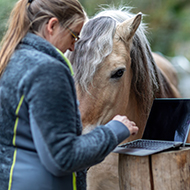Doritos dye makes living tissue transparent, study finds
“For those who understand the fundamental physics behind this, it makes sense; but if you aren’t familiar with it, it looks like a magic trick” – Zihao Ou.
A dye commonly used in food can make tissue temporarily transparent in living animals, scientists at Stanford University have found.
The discovery could potentially make it easier to see inside the body for those working in veterinary and human medicine.
In a series of experiments, the researchers messaged a solution of water and tartrazine, a dye used in Doritos and other food, onto the scalp, abdomen, and hindlimb of a sedated mouse.
When used on the abdomen, the researchers were able to observe internal organs and muscle contractions in the digestive system through the skin. After it was used on the scalp, the team could observe blood vessels on the brain’s surface, and using it on the hindlimb allowed them to produce high-resolution images of muscle sarcomeres.
Zihao Ou, lead author the study, explained: “It takes a few minutes for the transparency to appear. It’s similar to the way a facial cream or mask works: the time needed depends on how fast the molecules diffuse into the skin.”
When the skin absorbed the dye, the water’s refractive index matched the index of parts of the tissue such as lipids. This lowered the amount of light which was scattered by the skin, allowing the researchers to see through it.
Dr Ou said: “For those who understand the fundamental physics behind this, it makes sense; but if you aren’t familiar with it, it looks like a magic trick.”
After the dye had been washed away, the transparency quickly wore off. Dye that had been absorbed by the skin was metabilised and then excreted in the mouse’s urine.
Although the technique has not yet been tested on humans, whose skin is around 10 times thicker than that of mice, the researchers are hopeful that the discovery could eventually be used in human medicine as well as on animals. In some instances, it could potentially replace X-rays or CT scans.
Dr Ou added: “Many medical diagnosis platforms are very expensive and inaccessible to a broad audience, but platforms based on our tech should not be.”
The study has been published in the journal Science.
Image © Shutterstock



 With Strangles Awareness Week just around the corner (5-11 May), vets are being encouraged to share a survey about the disease with their horse-owning clients.
With Strangles Awareness Week just around the corner (5-11 May), vets are being encouraged to share a survey about the disease with their horse-owning clients.